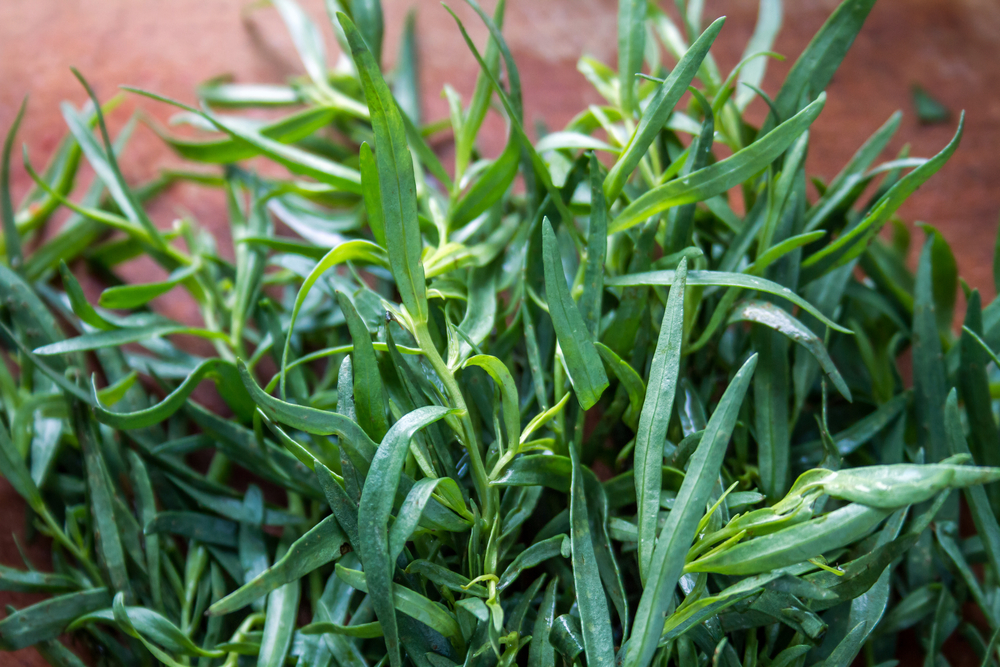Tarragon has a bold flavour rather like liquorice. It is in season in the UK from May to September. Use the chopped leaves (the stems are usually too woody) to add flavour to a roast chicken – put some in the cavity before roasting. It is also good with simply grilled or baked fish such as salmon, or meaty white fish such as cod, and it can also add glamour to scrambled eggs, or to make Hollandaise or Bearnaise sauces. *Tarragon butter, which can be frozen, is a good way to add a burst of tarragon flavour to grilled or griddled chicken or steaks and it is easy to make.
If you have some tarragon to spare when it gets towards the end of the season, you could make some *tarragon vinegar which can be used all year round – just add a few drops to dressings and sauces where appropriate.
*Tarragon Butter
Mash 125g of softened butter with the chopped leaves from a stem or two of tarragon. Put the mixture onto a piece of baking parchment and use the parchment to roll the butter into a sausage shape. Twist the ends to secure the package. Let the butter get cold in the fridge and slice into discs to use. The discs can be frozen too in appropriate wrapping. The quantities given here will make 8-10 discs.
**Tarragon Vinegar
Simply add a stem or two of tarragon to a full bottle (350mls) of white wine vinegar. Screw the lid back on and leave to infuse for 2 to 4 weeks; then, strain the vinegar through a fine sieve to remove the tarragon and refill the bottle (***sterilise it first) and store – the vinegar should keep well for at least a year, probably longer.
***To sterilise jars:
Preheat the oven to 120c
Wash the jars and lids in hot soapy water
Rinse them in clean water
Put them upside down on a clean baking tray
Heat them in the oven for 15 minutes
Handle then with a very clean cloth

